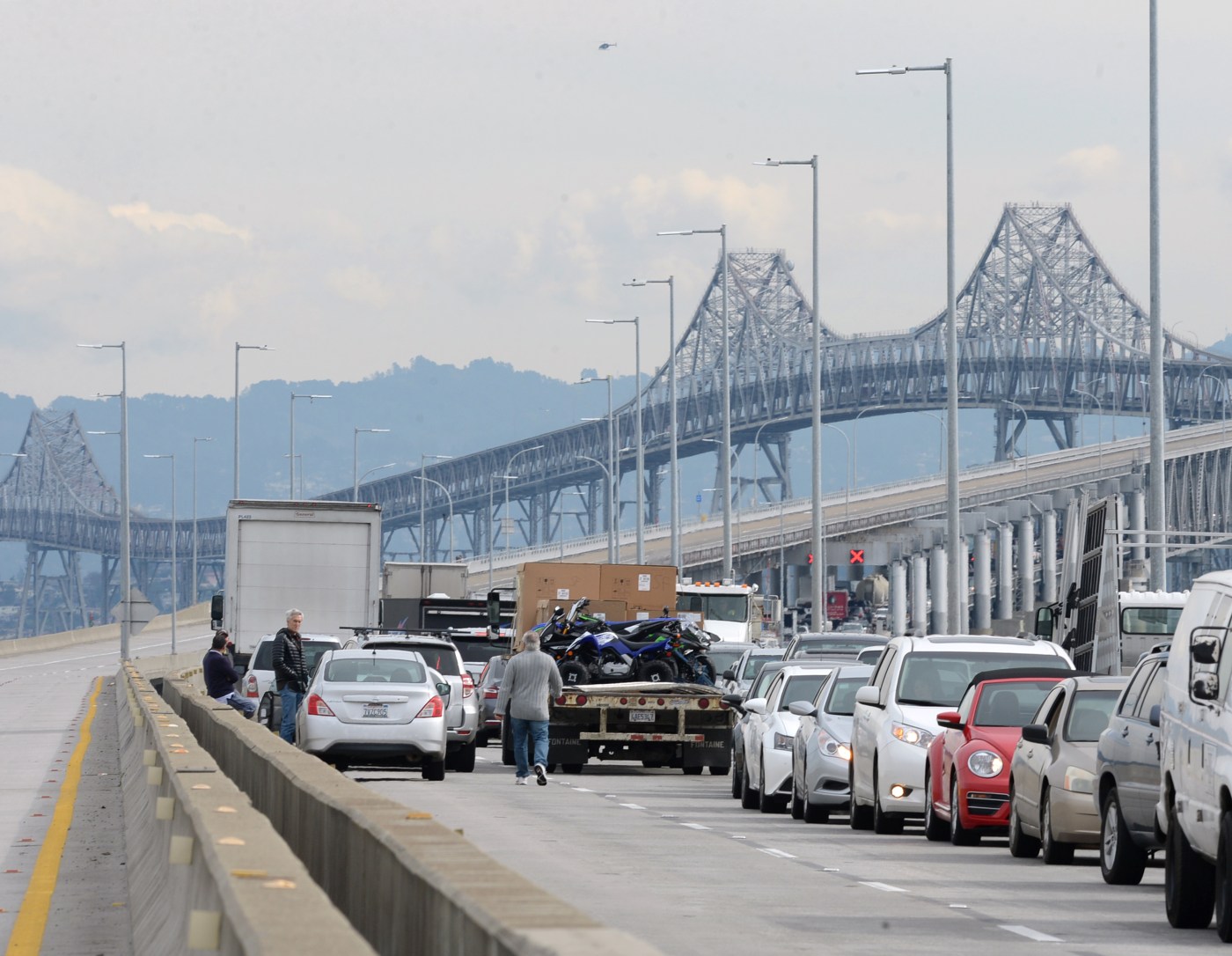
RICHMOND — The Richmond-San Rafael Bridge has been a source of contention for years as frustration over the amount of traffic that travels along it continues to be a sore spot among daily commuters.
Construction delays and the addition of a pedestrian travel lane added to those frustrations. But rather than fight over who gets to use the bridge, Richmond Vice Mayor Cesar Zepeda said his goal is to get a new one built that adequately meets the needs of all who travel the expanse.
“We need something that fits the community’s needs,” Zepeda said. “We shouldn’t have to fight over it. We know the needs of the community have changed, but we haven’t changed along with it.”
Zepeda estimates his vision for a new bridge would easily come with a $1 billion price tag. The councilmember believes he has secured support from U.S. Rep. John Garamendi to seek out the funding needed for a replacement study.
Garamendi, a Democrat representing West Contra Costa County and the southern portion of Solano County, did not immediately respond to requests for comment.
Zepeda said he has been lobbying Garamendi on the issue for more than a year and is committed to playing the long-game to achieve a dream he says is vital to the wellbeing of North and East Bay residents.
Opened to the public in 1956, the Richmond-San Rafael Bridge has acted as a connection over the San Francisco Bay for residents of Contra Costa and Marin counties for nearly 70 years. About $66 million went into building the 5.5-mile-long bridge over a three-and-a-half year period.
About 4 million cars were projected to travel over the bridge when first built, according to the July-August 1956 edition of the California Highways and Public Works Journal. Nearly 12.9 million cars traveled over the bridge in 2023, according to figures from the Metropolitan Transportation Commission, which oversees transportation planning, financing and coordination for the nine San Francisco Bay Area counties.
What was once lauded by former California Gov. Goodwin J. Knight as a “magnificent bridge, linking the north coast agricultural, residential and recreational empire with the East Bay industrial centers,” simply isn’t adequate to serve the region anymore, Zepeda said.
Traffic backups during peak commute hours commonly affect those trying to get to work, whether traveling from Richmond over the upper two-lane deck or from San Rafael’s lower three-lane stretch. The congestion is of particular concern for Zepeda, who says his constituents are the ones breathing in the toxic air created by the lines of crawling cars.
A pilot pedestrian path on the upper level, which has facilitated 406,708 bicycle trips since its installation in late 2019 and 58,818 pedestrian trips since 2020, was met with mixed reviews practically since its opening nearly five years ago and has locked business and labor groups into a fight with bicycle advocates over the fate of the lane.
Beyond the bridge’s functionality, Zepeda said the safety of the structure is also inadequate. The Richmond-San Rafael Bridge has an overall “fair condition” rating, according to a January Toll Bridge Program Report by the Bay Area Toll Authority, the financial manager of the Bay Area’s seven state-owned bridges.
The Richmond-San Rafael Bridge isn’t the worst off in the region, Zepeda noted. That ranking goes to the San Mateo-Hayward Bridge, which has an overall “poor” rating, according to the program report.
But Zepeda questioned the “fair” rating of the Richmond-San Rafael Bridge, noting part of that ranking is based on the bridge’s deck receiving a “good” rating. Each segment of the Richmond-San Rafael Bridge has shown signs of deterioration, Zepeda pointed out, an assertion verified in the program report.
“If you look at the bridge, this one is not as worse off as others,” Zepeda said. “However, it is bad.”
Chunks of falling concrete closed the bridge in 2019 and forced months of emergency repair work. More emergency repairs were conducted just weeks ago after crews spotted “unsound, spalling concrete” on the upper deck. Additional deck repairs are expected to last through Friday.
Zepeda shared concerns about the safety of the bridge during an earthquake or if struck by a ship, a concern also raised by the National Transportation Safety Board.
“I want to get this together because it’s important for the community and the community doesn’t realize where the bridge is in terms of the rating. Some do because they see it’s crumbling and think ‘that’s not very good,’ but many haven’t seen the report,” Zepeda said.
Rather than dump millions of dollars into repairing the bridge, Zepeda said officials should fight for a full replacement. More than $261.5 million is slated to be spent on future repairs and upgrades over the next eight years, according to the program report.
The goal of a replacement is ambitious and will likely take decades to complete, Zepeda acknowledges. A study would cost millions and require years of research and community outreach, he said, but the mission is an important one, Zepeda contends.
“This is day one of many years to come,” Zepeda said. “We have to plant the seed today because we need to grow with the community.”